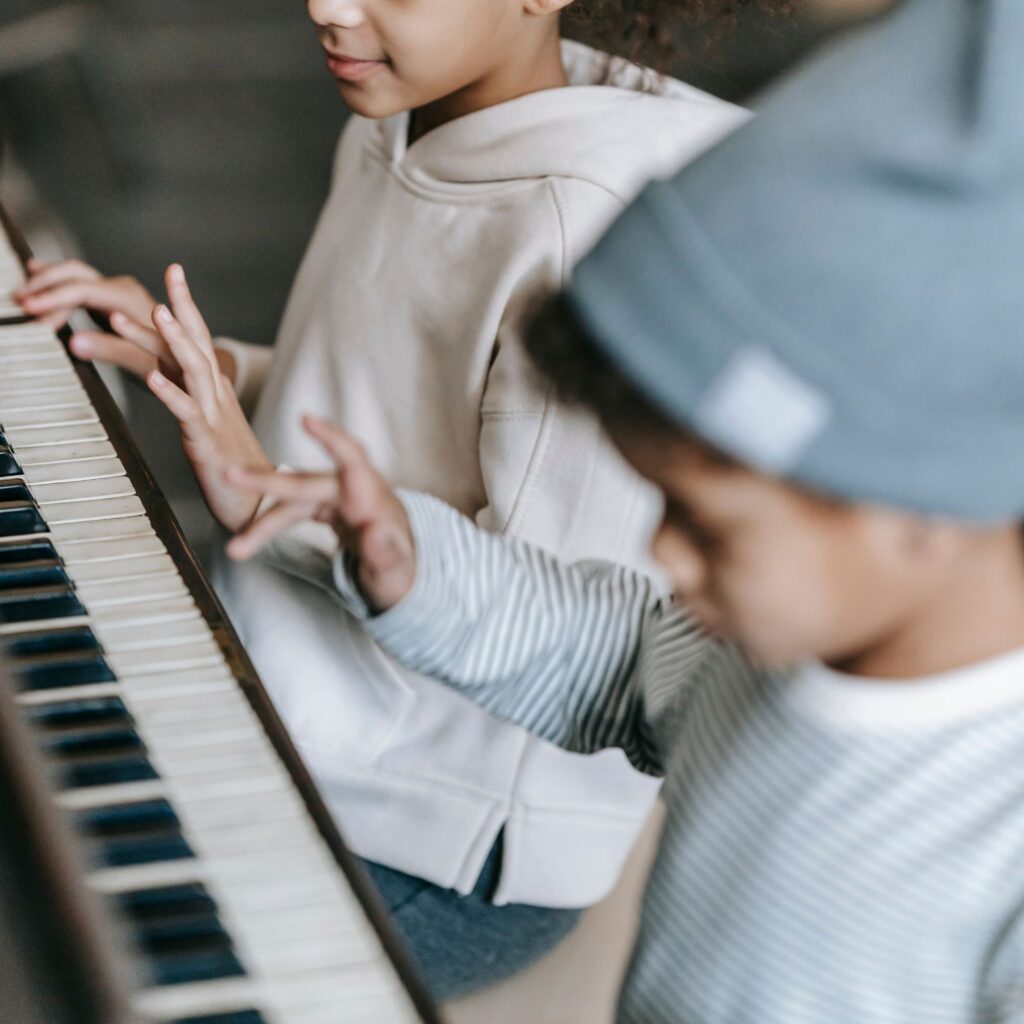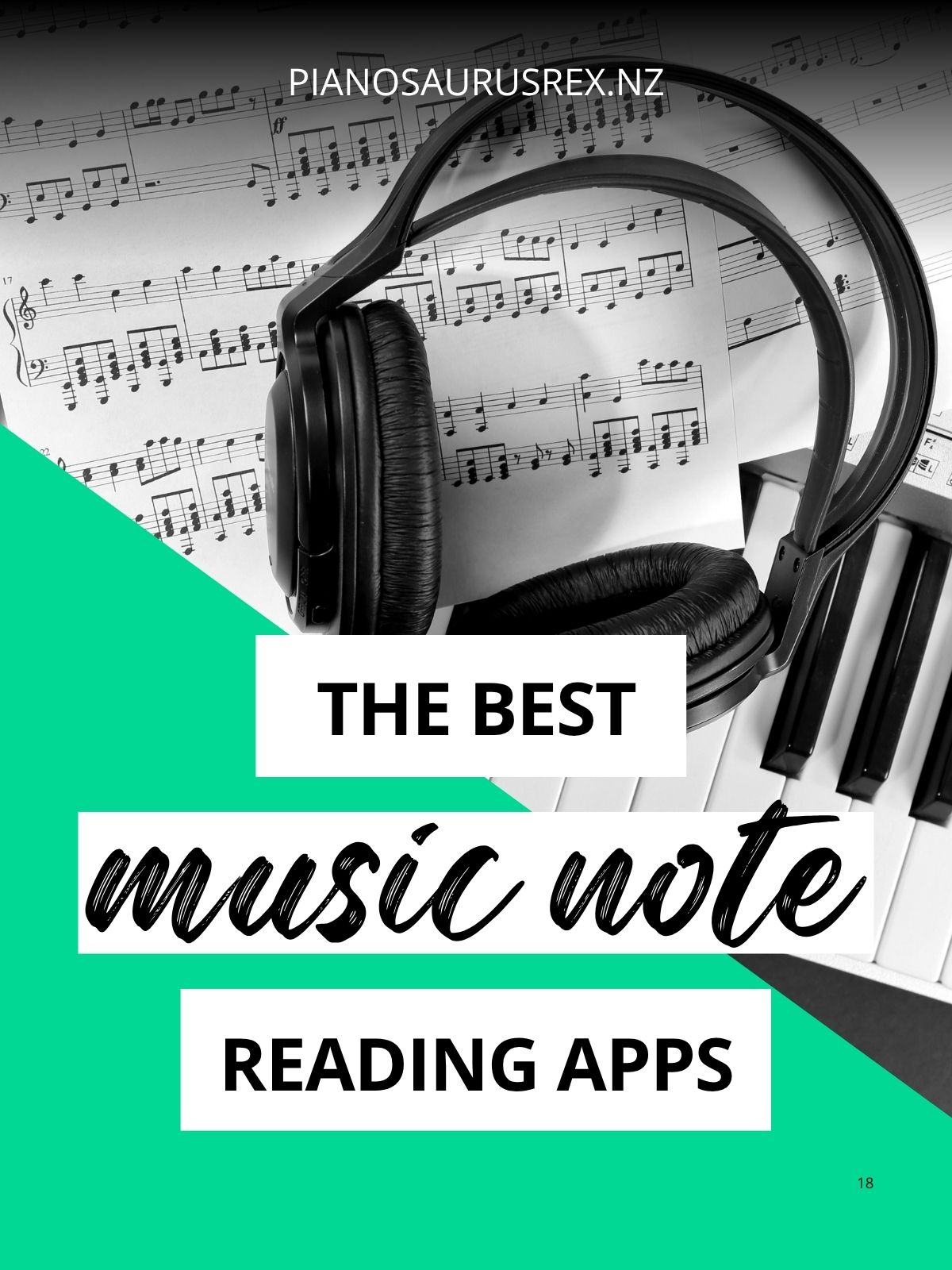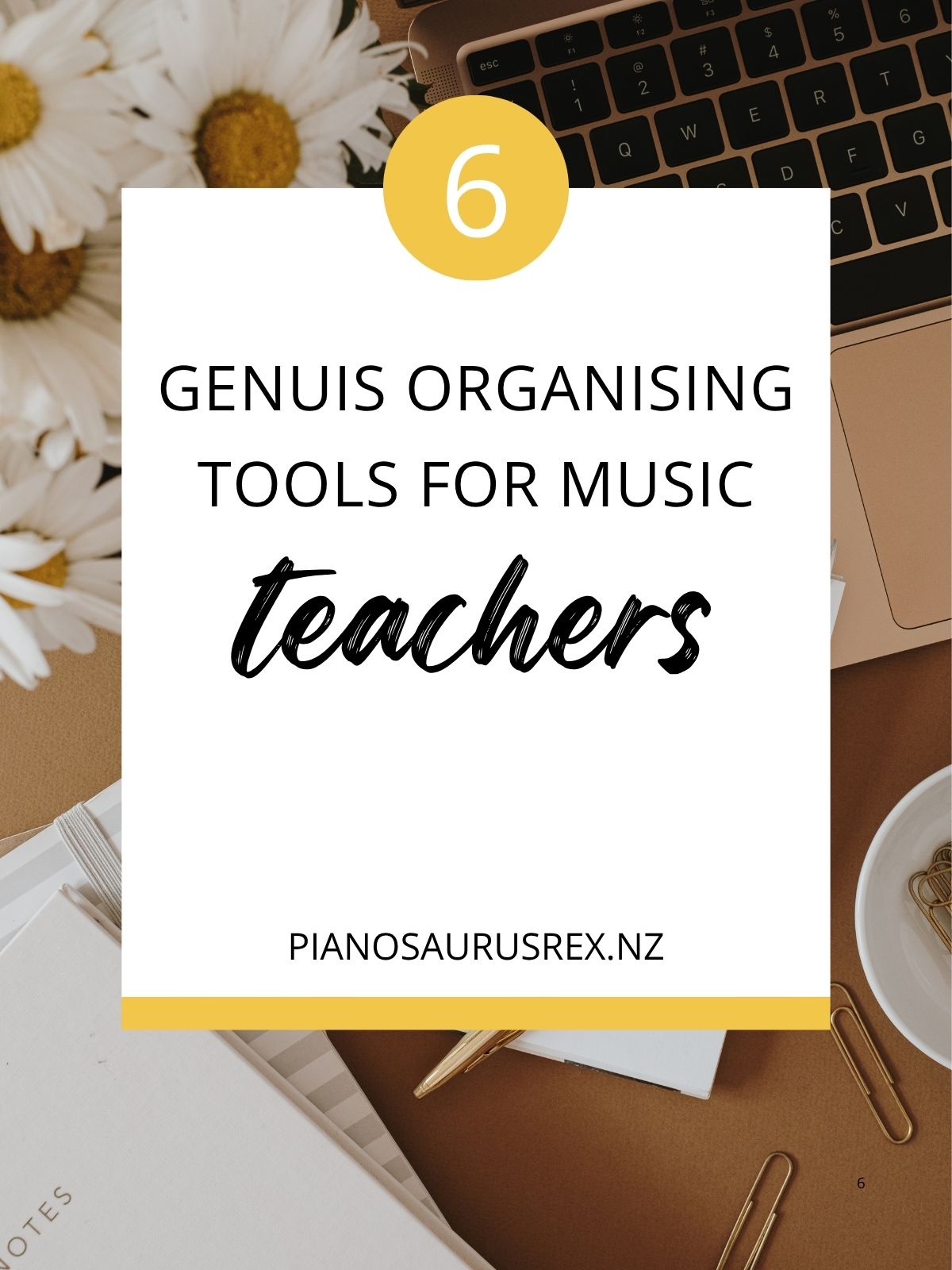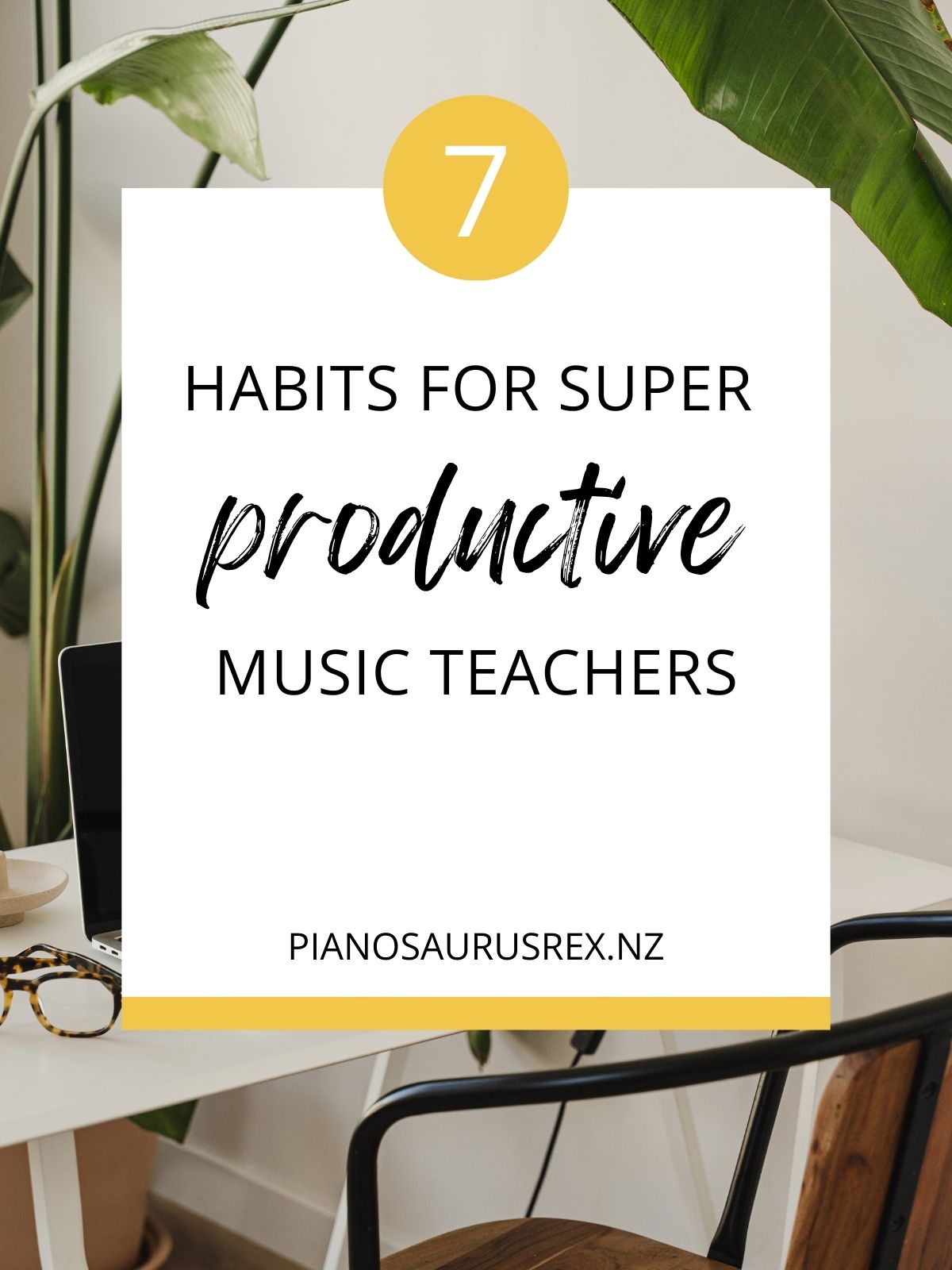A Well-Balanced Curriculum for Beginner Piano Students
When developing a curriculum for beginner piano students in the Foundation Programme, I wanted to create a balanced system that included core repertoire, technique and theory. As students progress through the four different levels, we focus on building a strong base to prepare for the Expansion Programme.
Here’s an outline of the material covered in each level, a look at some of the resources that are used, and an explanation of how it all works together:
Different Elements to Incorporate
Over the (many) years I’ve been teaching I’ve tried out a lot of different method books, theory workbooks, and approaches to technique (as well as a lot of resources for every other area of music!) I feel like I’ve landed on a good combination which ticks all the boxes of a well-rounded introduction to piano. Here’s a look at the different resources that feature in the Foundation Programme:
Repertoire
I’ve been using the Supersonics method books with my students for years, and really like the original version of the series. I’m able to print copies for my students with the digital license, which has made it easy to include and exclude particular pieces (and swap the order around a little). My only issue with this series was the later introduction of the left hand and bass clef, so I’ve added some extra pieces into the first section.
To keep track of progress I’ve also created lists of the pieces in each level, which are marked as complete when they can be played fluently. Although each level does have these specific pieces, there’s definitely flexibility when it comes to repertoire choice. I would never make a student learn a piece they didn’t like, and with so many options available it’s easy to find an alternative piece that covers the same material.
When looking for supplementary pieces here are some of my favourite collections:
- Alfred’s Basic Piano Library
- Carol Matz Piano
- Compose Create
- EVC Music
- Imaginative Repertoire
- Piano Adventures
- Piano Pronto
- Wunderkeys
Read More: 7 Brilliant Websites for Original Piano Sheet Music
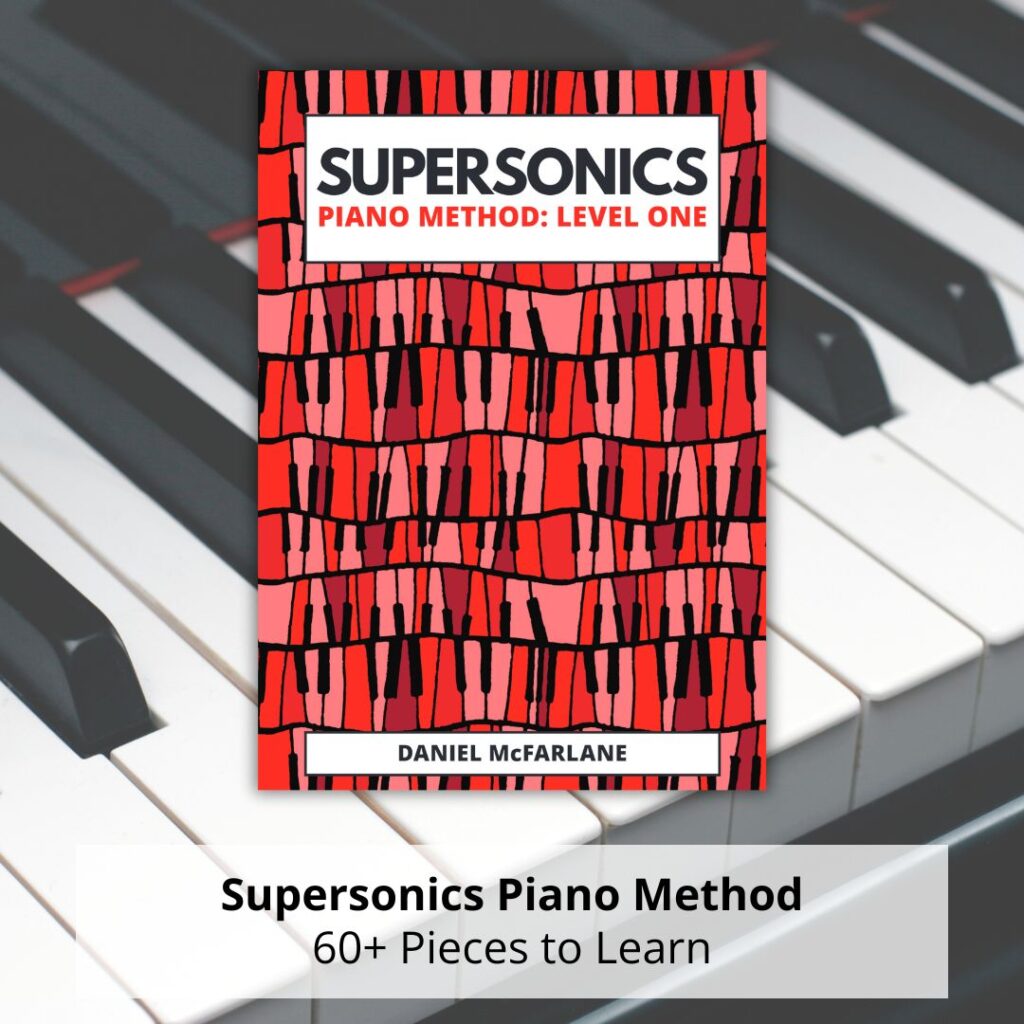
What I look for in a method book for beginner piano students:
Note reading from the first piece
Pattern based (stepping, skipping, intervals)
Melody in the right and left hand
Based in C position
Engaging pieces that students love to play!
Technique
Learning chords and pentascales in all keys is such an important element of music lessons. Recognising these patterns early on is gold for developing an understanding of key signatures, improving sight reading, and learning about transposing. Plus spending time playing broken chords and pentascales is a great way to improve technique like finger independence, speed, and dexterity.
There are a few different resources available for learning pentascales and chords, but I had a specific idea of how I wanted to organise everything in levels so I ended up creating my own!
The digital version of Key Exploration can be found in the Pianosaurus Rex Shop, so it’s available for any teachers who’d like to use this resource with their students.
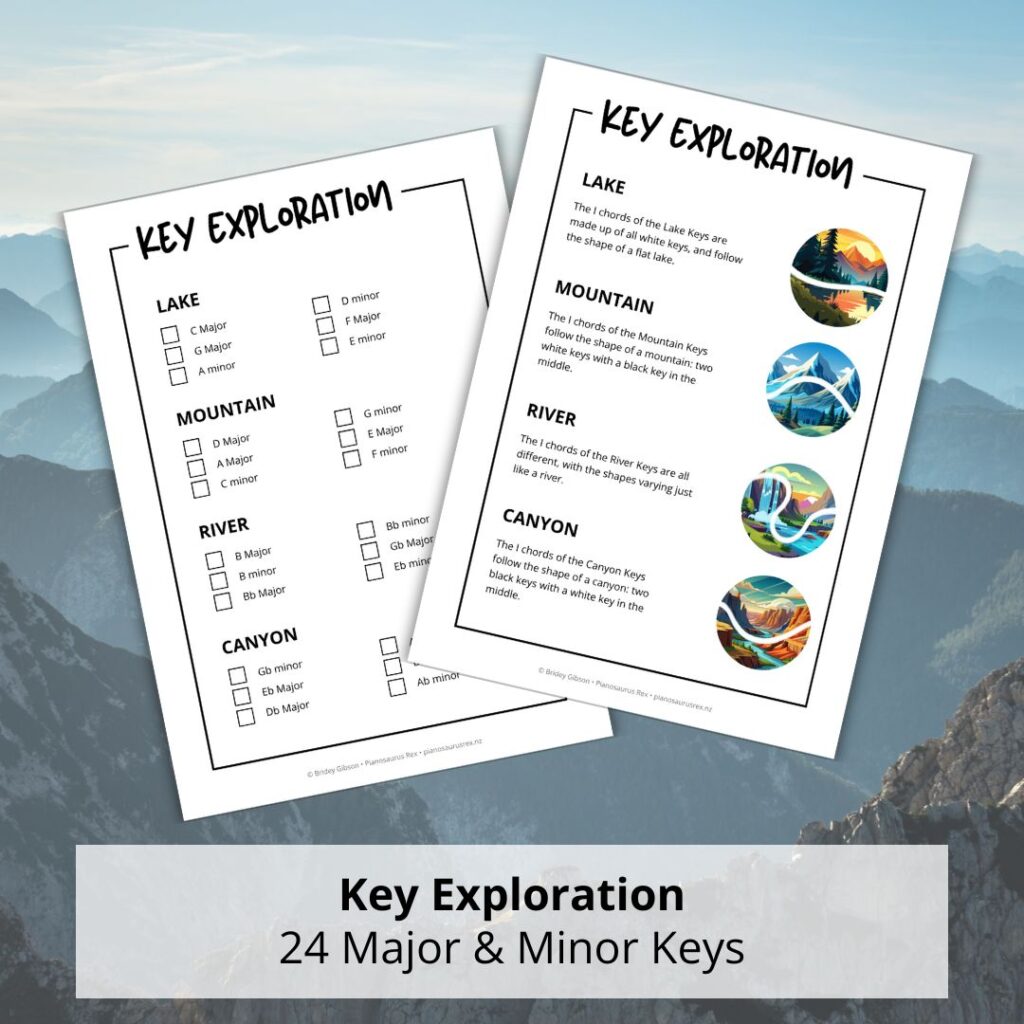
I want students to learn all 24 major and minor chords and pentascales.
These have been organised into four different levels which are based on the shape of the I chord:
Lake with all white keys
Mountain with one black key in the middle
River with a mix of white and black keys
Canyon with one white key in the middle
Theory
Including some written activities for music theory can really help to cement knowledge, so students complete theory workbooks which correlate to the material they’re learning about in their method book.
Students are responsible for marking their own work using an answer booklet, and are able to correct any errors or issues. If we find there’s any areas they struggle with, there are a few different ways to review the information:
- Discussion and demonstrations during their one-on-one lessons
- Theory videos (sometimes it just takes a different way of explaining things for it to click)
- Additional theory worksheets about a specific topic
- Music theory games that cover relevant concepts
- Theory apps (although these are best for reviewing material)
The first two levels of Theory Workbooks I use are available in the Pianosaurus Rex Shop, and the second two levels from Music Discoveries are currently unavailable.
Other popular theory workbooks include:
Read More: How to Use Worksheets on an iPad or Tablet
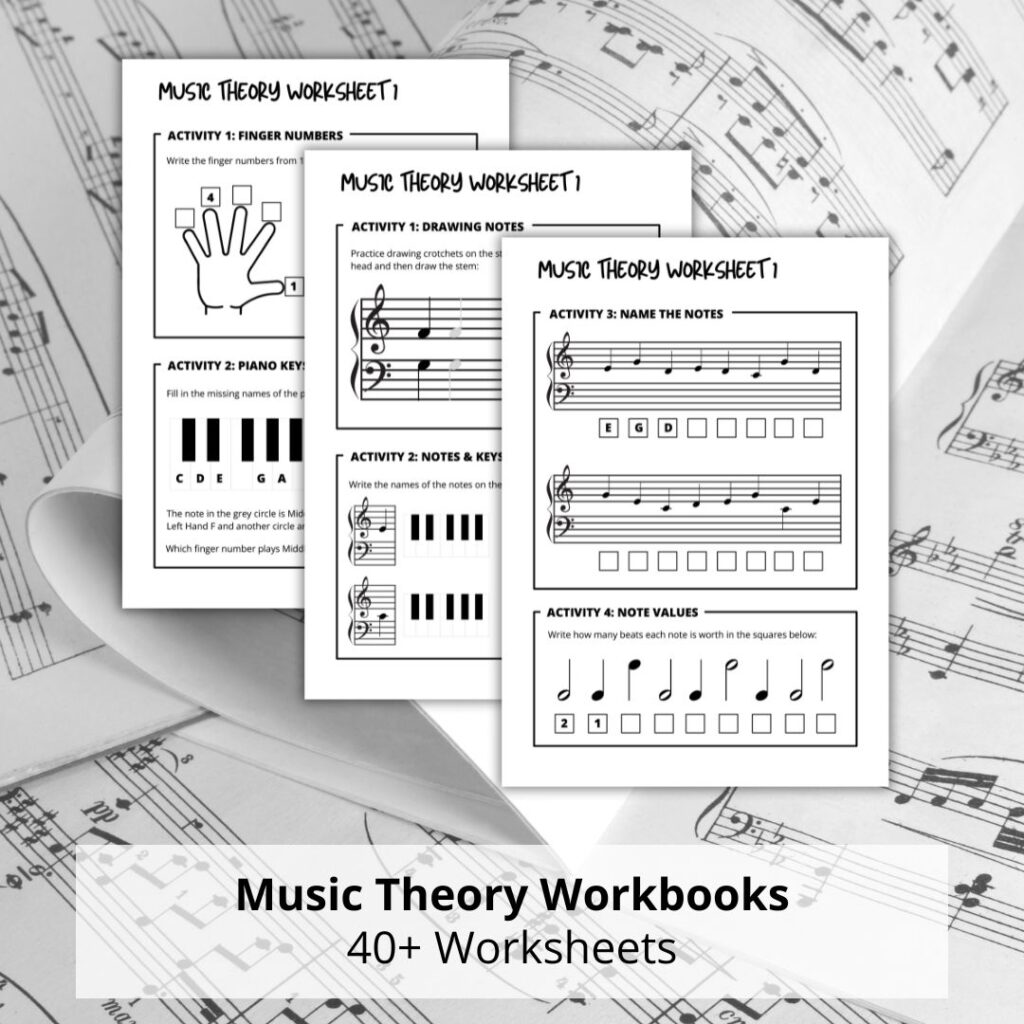
The theory worksheets are related to the concepts introduced in the repertoire at the four different levels:
Learning finger numbers and piano keys
Recognising notes on the grand staff
Understanding note length from quavers (eighth notes) to semibreves (whole notes)
Identifying intervals and chords on both the keyboard and the grand staff
Other Elements
In addition to these three main areas, the curriculum also covers:
- Ear training
- Improvisation
- Transposing
- Sight reading
- Composition
Developing Goals & Expectations
Having a clear goal in mind definitely helps students to focus as they progress with music lessons. In the Foundation Programme students feel a real sense of achievement as they complete each level and master the skills (as they should, there’s a lot of work involved!)
By the end of this programme students are ready to choose a particular track in the Expansion Programme. Whether they decide to focus on completing exams, expanding their repertoire, or composing, they have a great all-round knowledge and are prepared for a new challenge.
Creating a Clear Progression
Organising the different elements of music lessons into four distinct levels has made my students’ progress much easier to map out, follow, and track. Here’s the breakdown of what’s covered in each level of the curriculum for beginner piano:
Level One
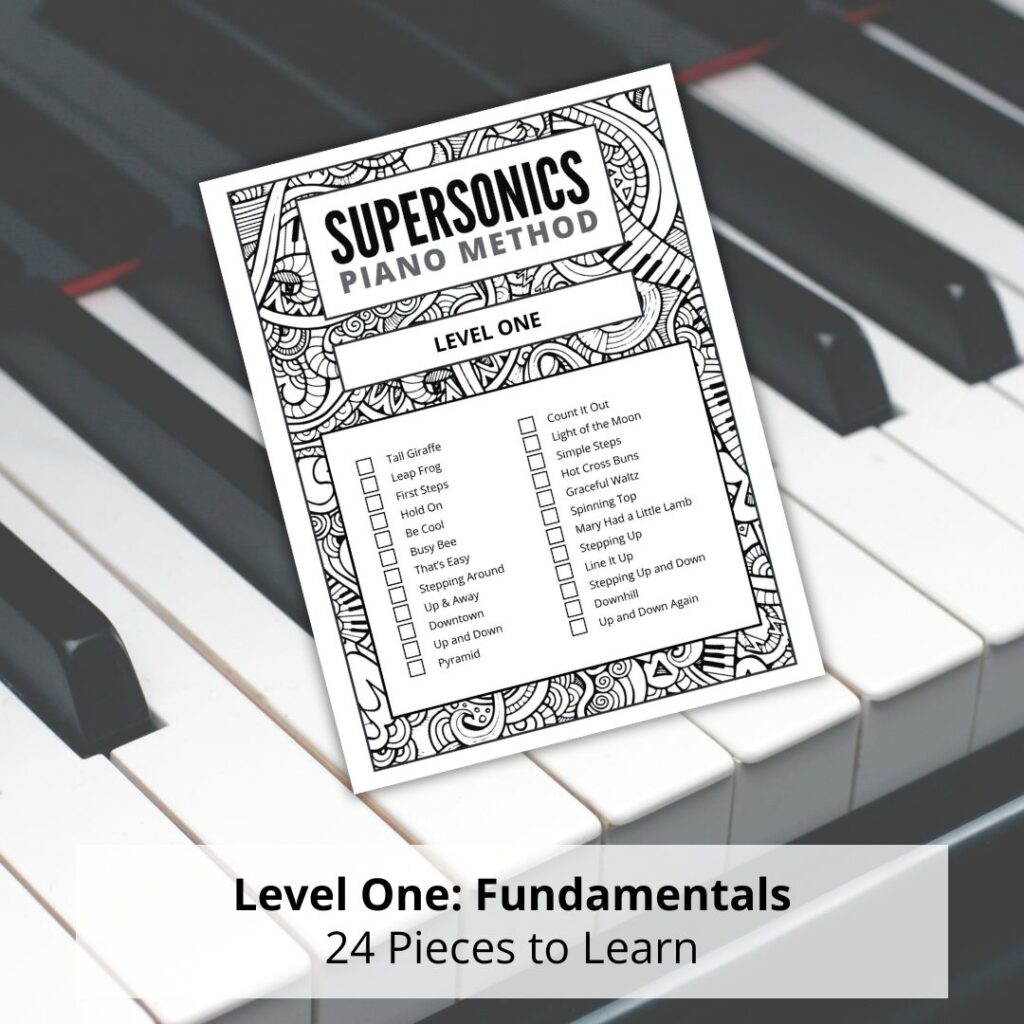
Repertoire
- Separate hands
- Right hand in Middle C position
- Left hand in Middle C position
- Focus on stepping patterns
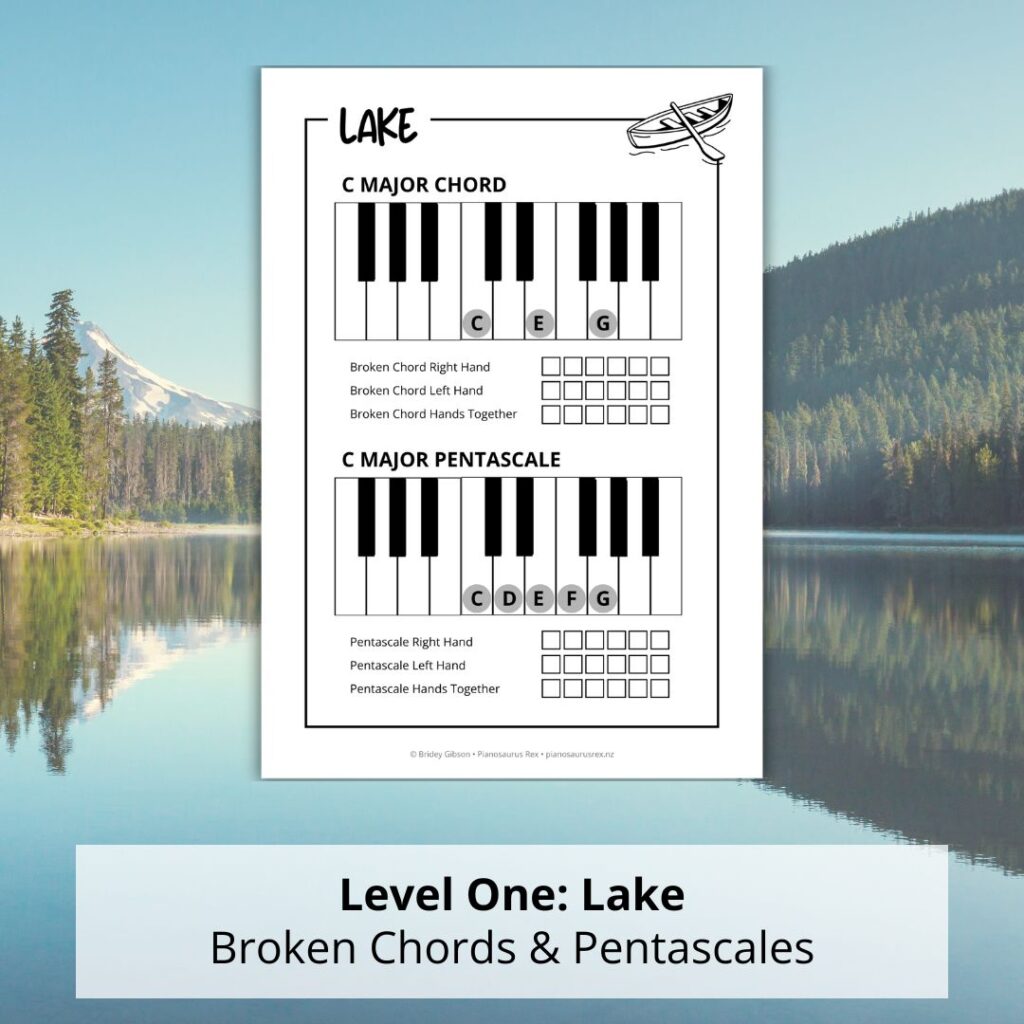
Technique
- White key broken chords
- White key pentascales
- Non legato
- Finger independence
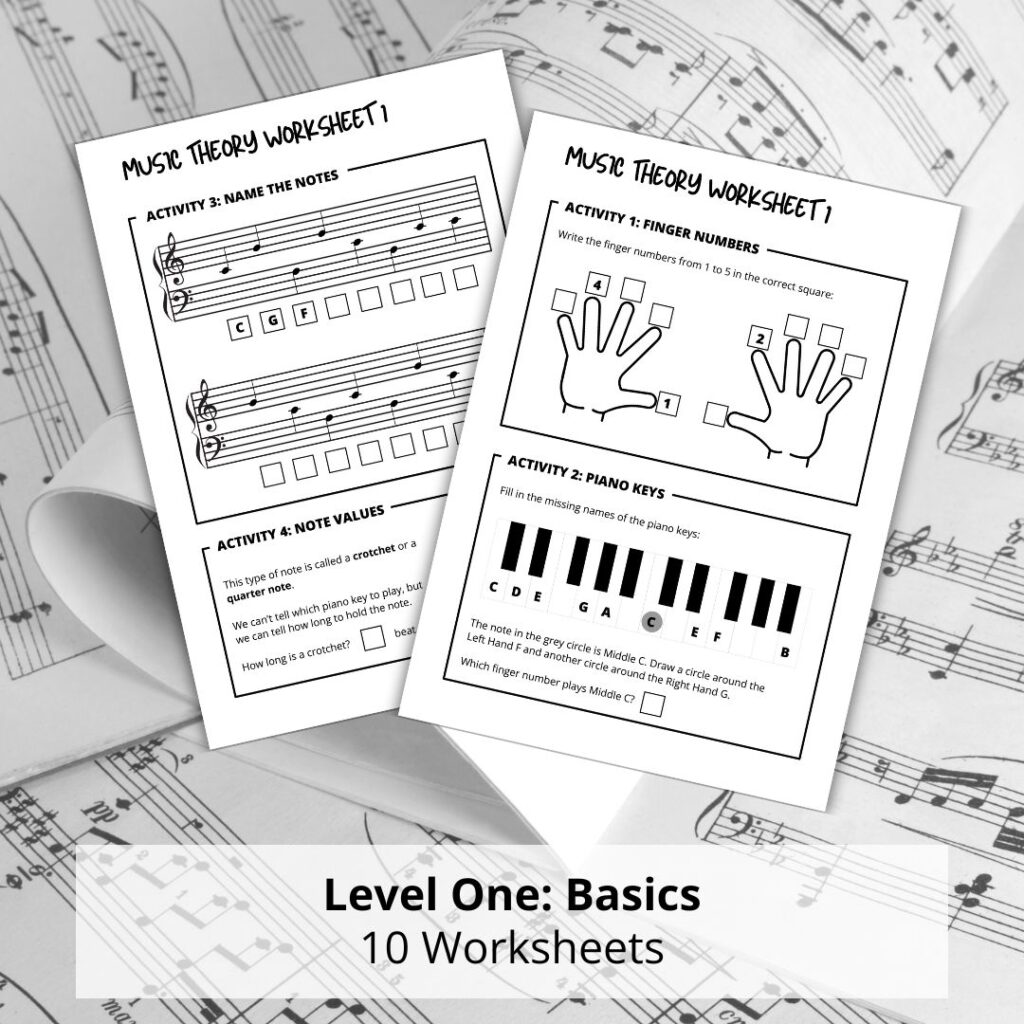
Theory
- Know finger numbers
- Recognise all piano keys
- Start to identify notes from Bass F to Treble G
- Introduction of note values
Level Two
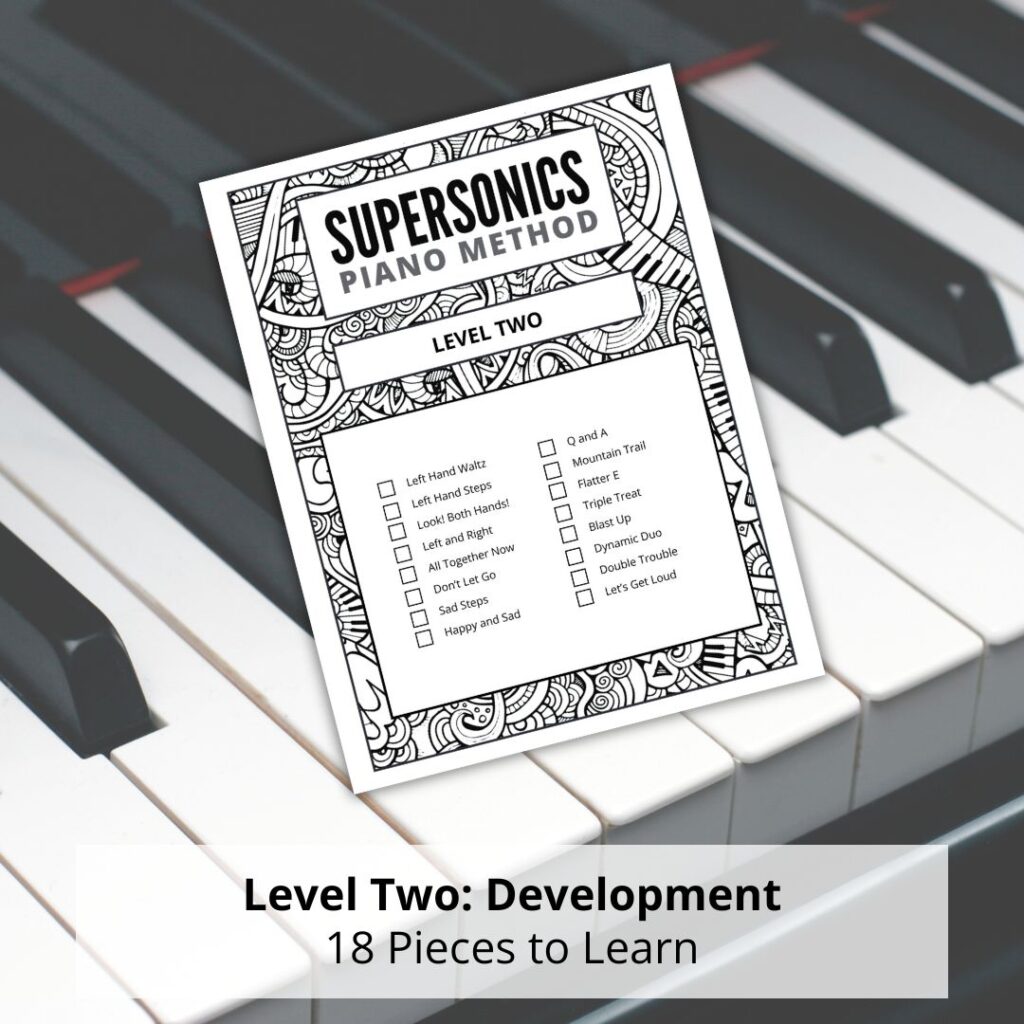
Repertoire
- Hands together
- Left hand in Bass C position
- Skipping patterns and chords
- Introduce flats
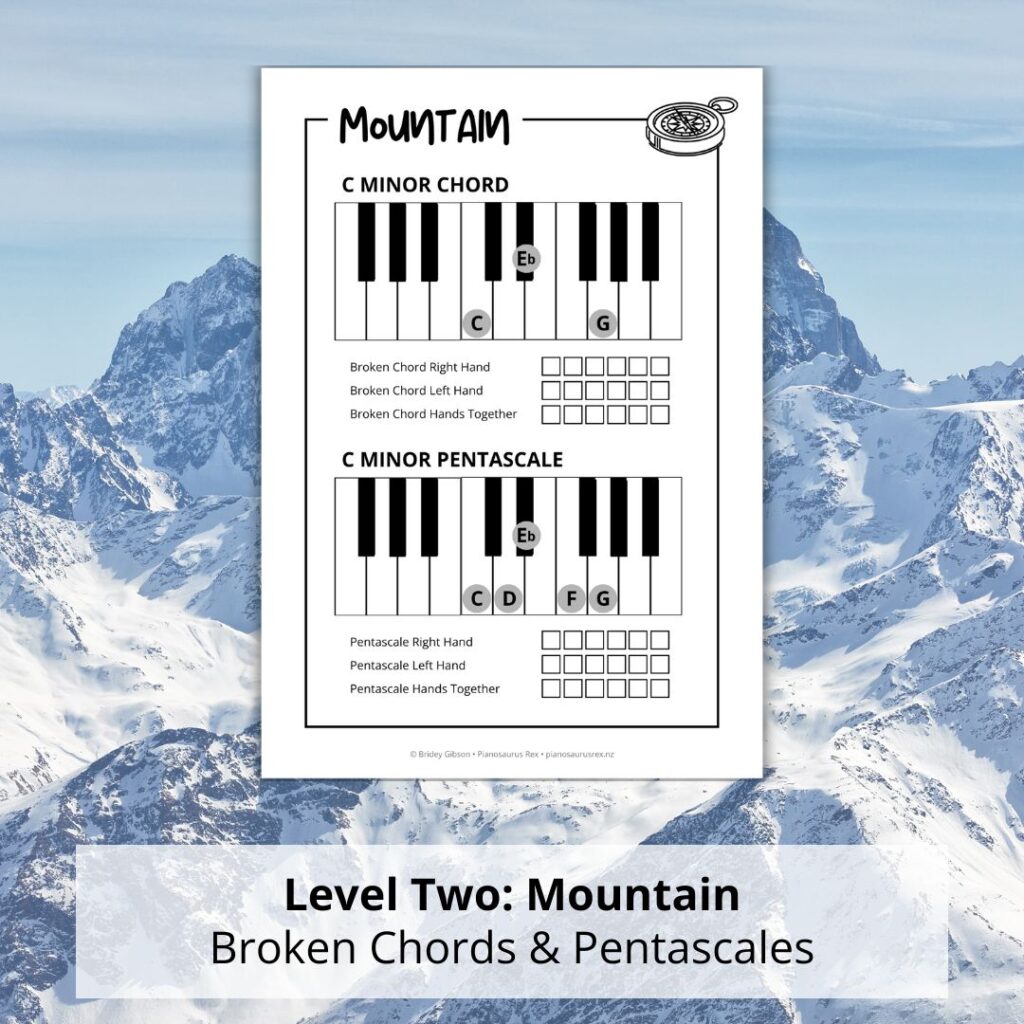
Technique
- White with black key broken chords
- White with black key pentascales
- Legato
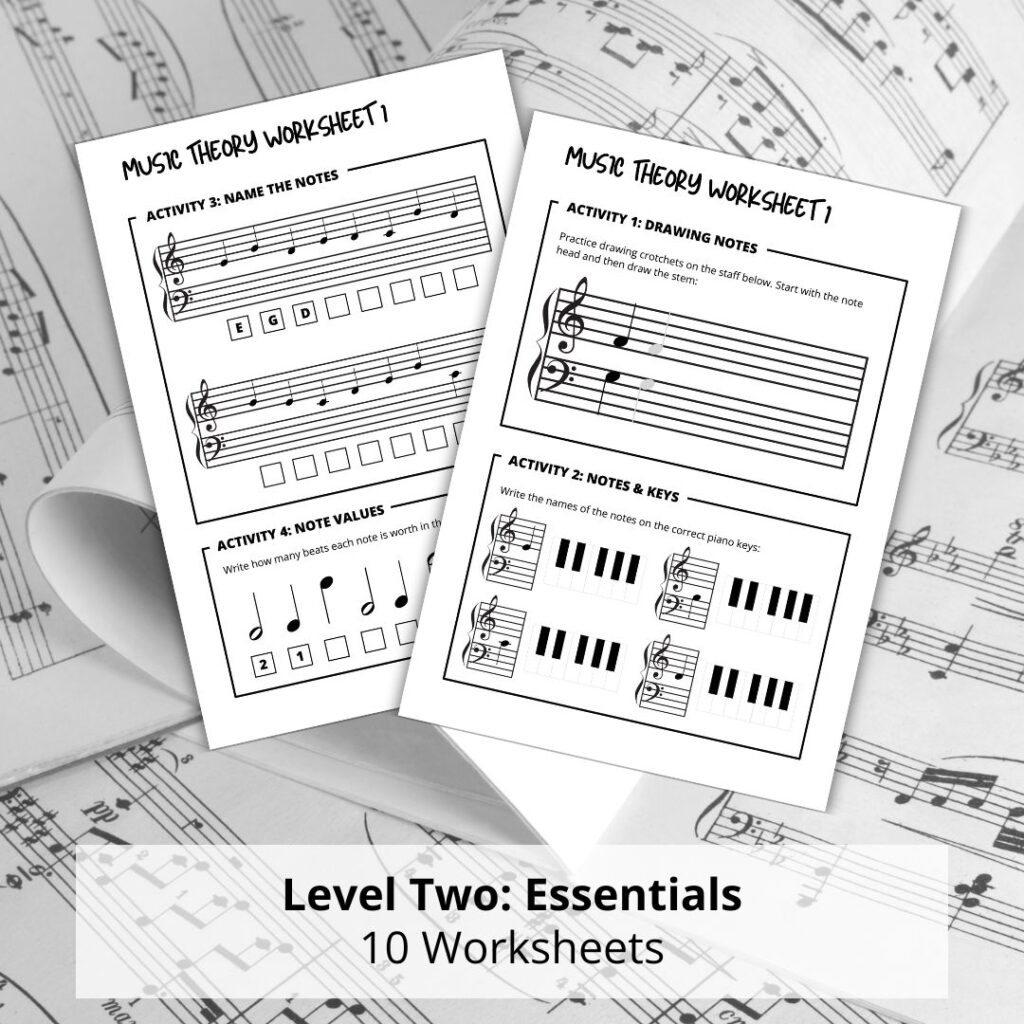
Theory
- Name notes from Bass C to Treble G
- Identify stepping and skipping notes
- Introduce quaver note values
Level Three
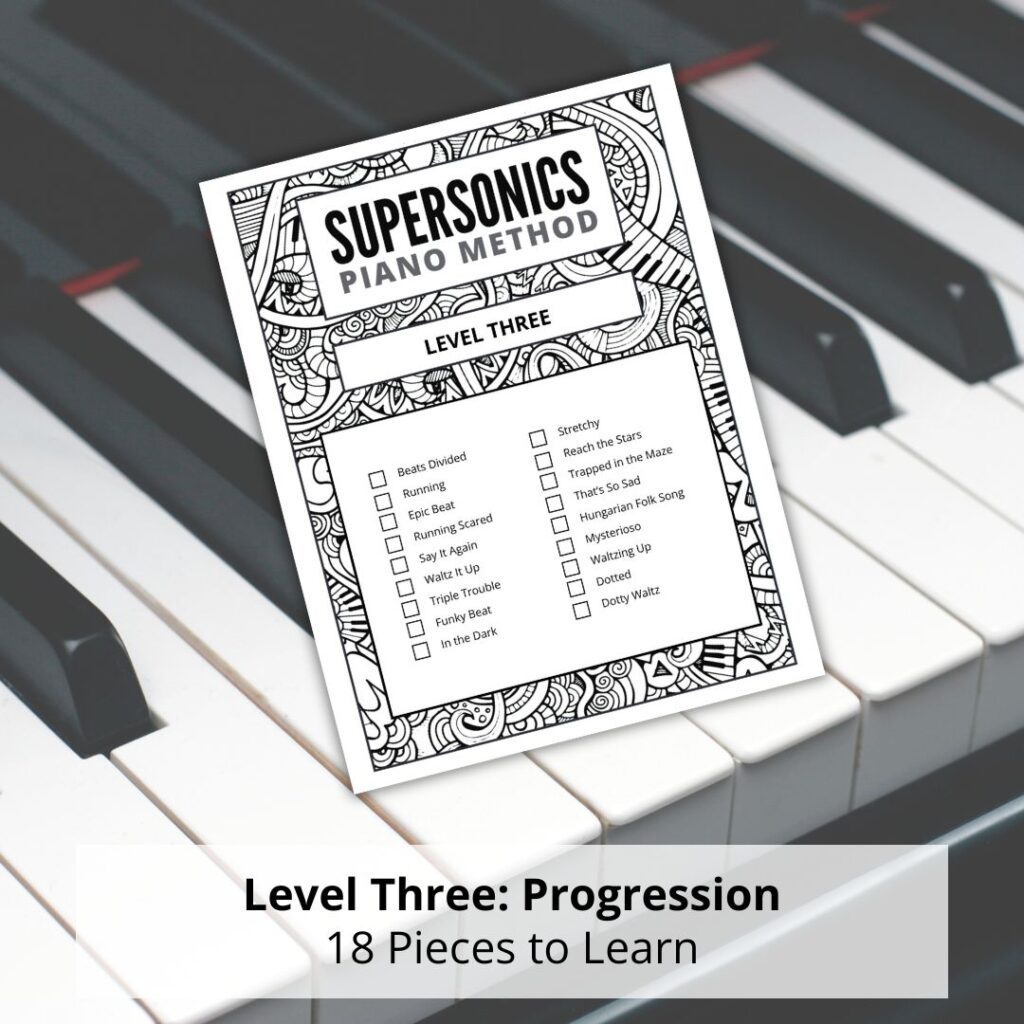
Repertoire
- Expanded notes with B to A for each hand
- Focus on intervals
- More complex rhythm
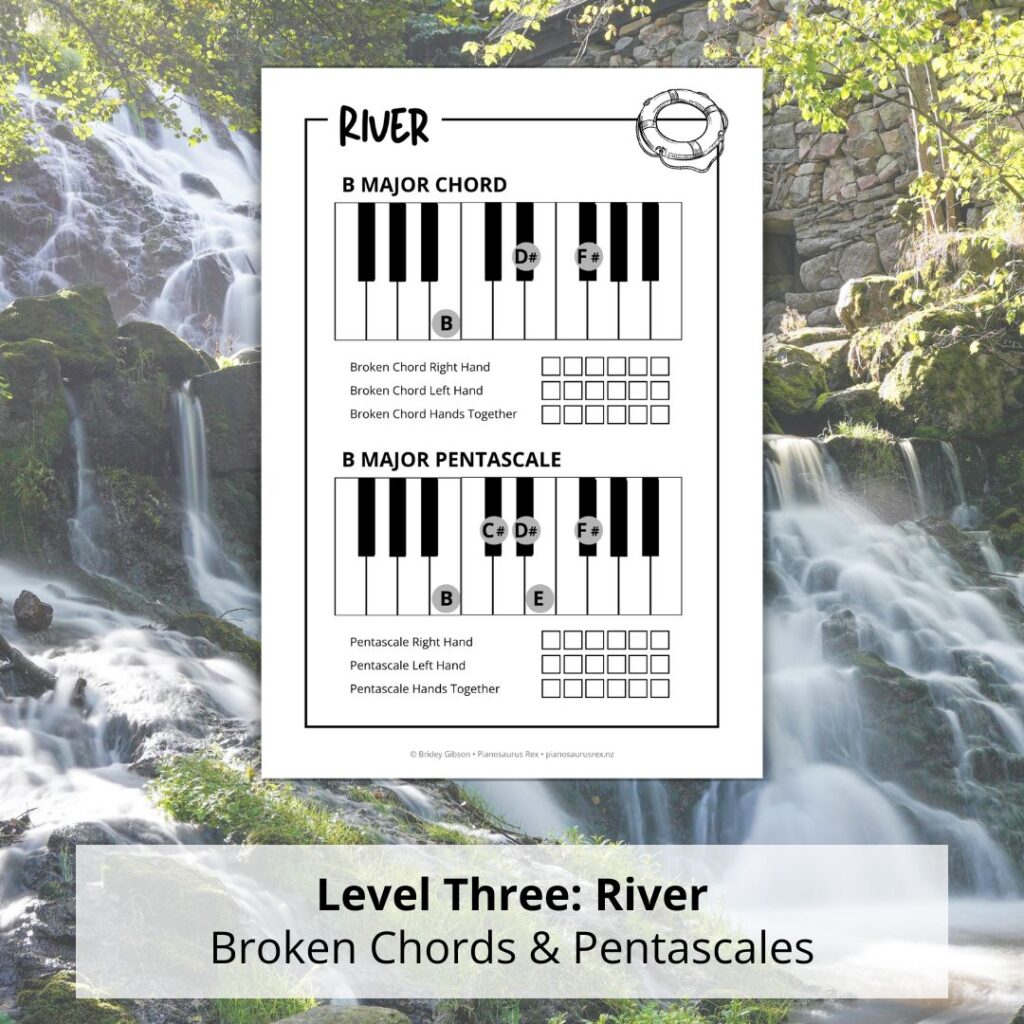
Technique
- A mix of white and black key chords
- A mix of white and black key pentascales
- Legato and staccato
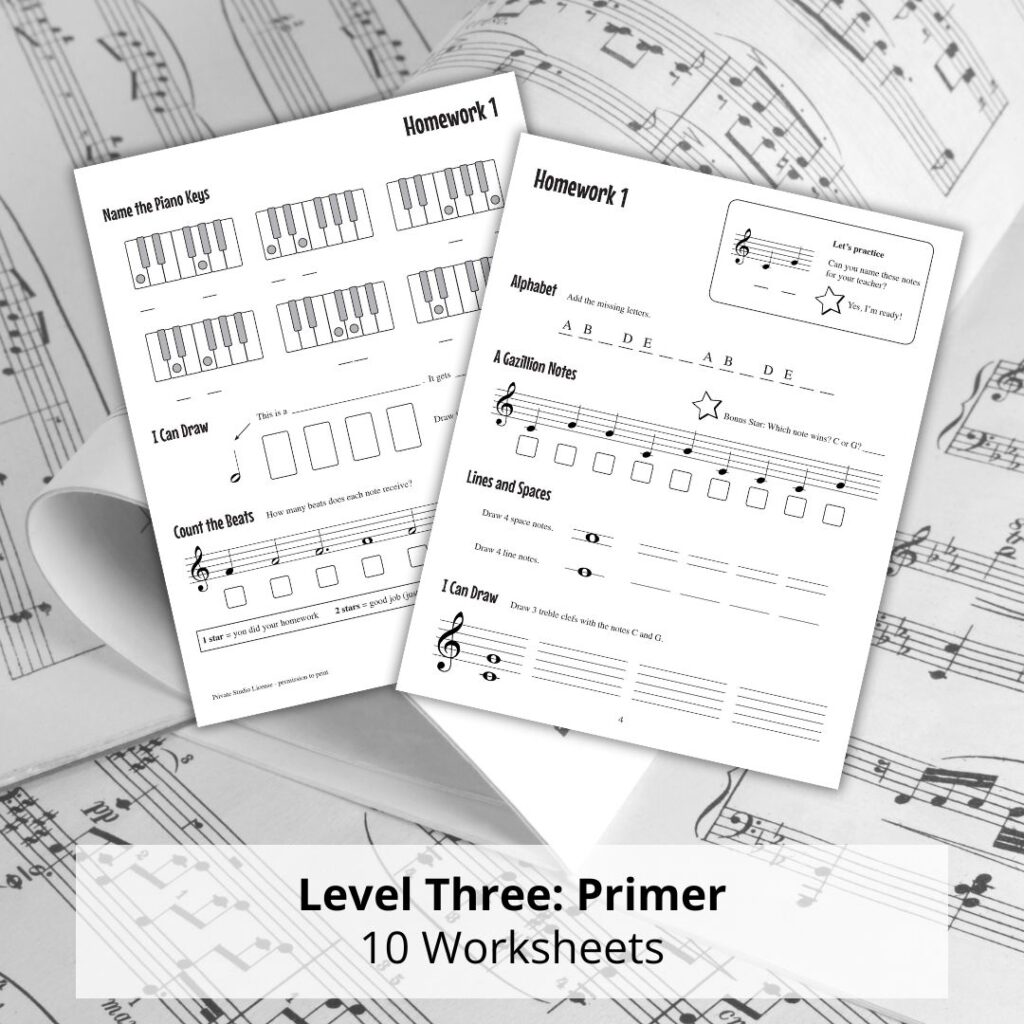
Theory
- Identify notes from Bass C to Treble C
- Introduce quaver note values
- Recognise intervals on the keyboard and grand staff
Level Four
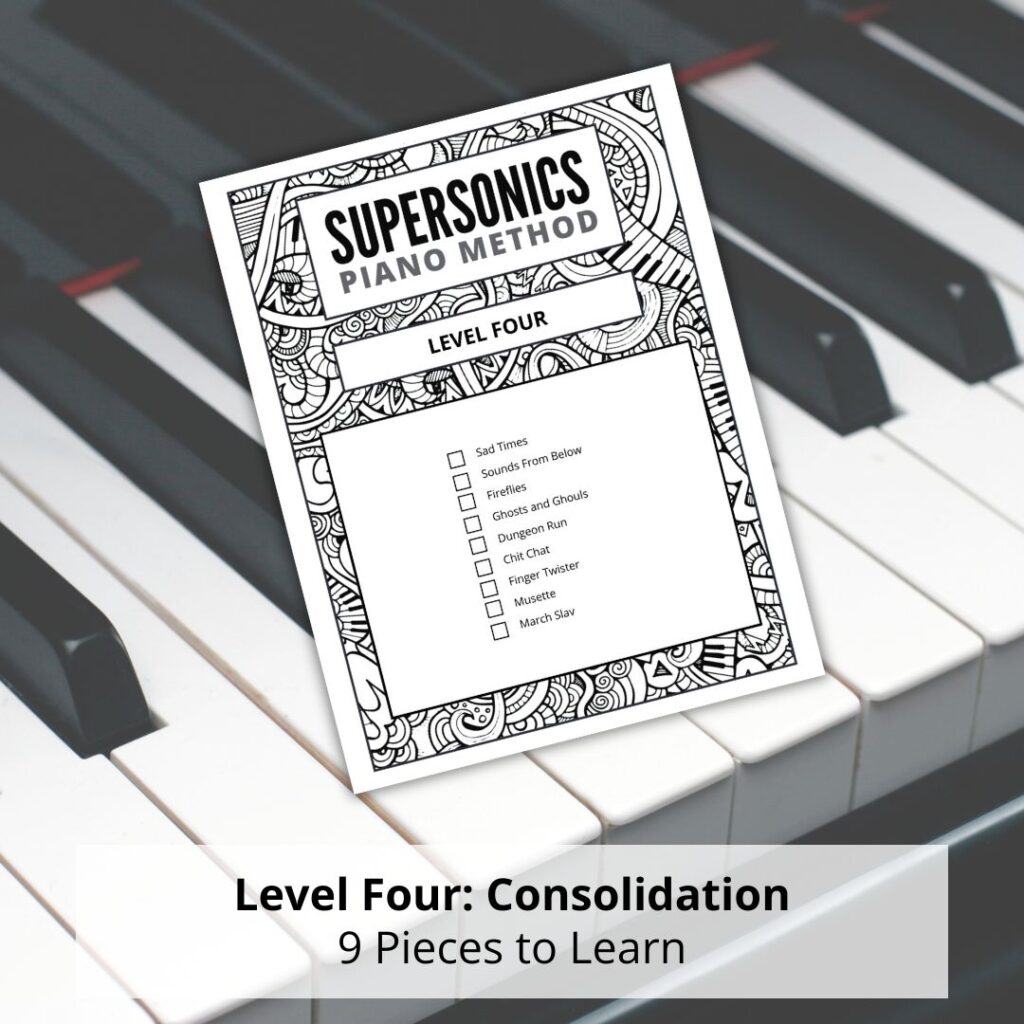
Repertoire
- Longer pieces
- Consolidating all elements from the previous three levels
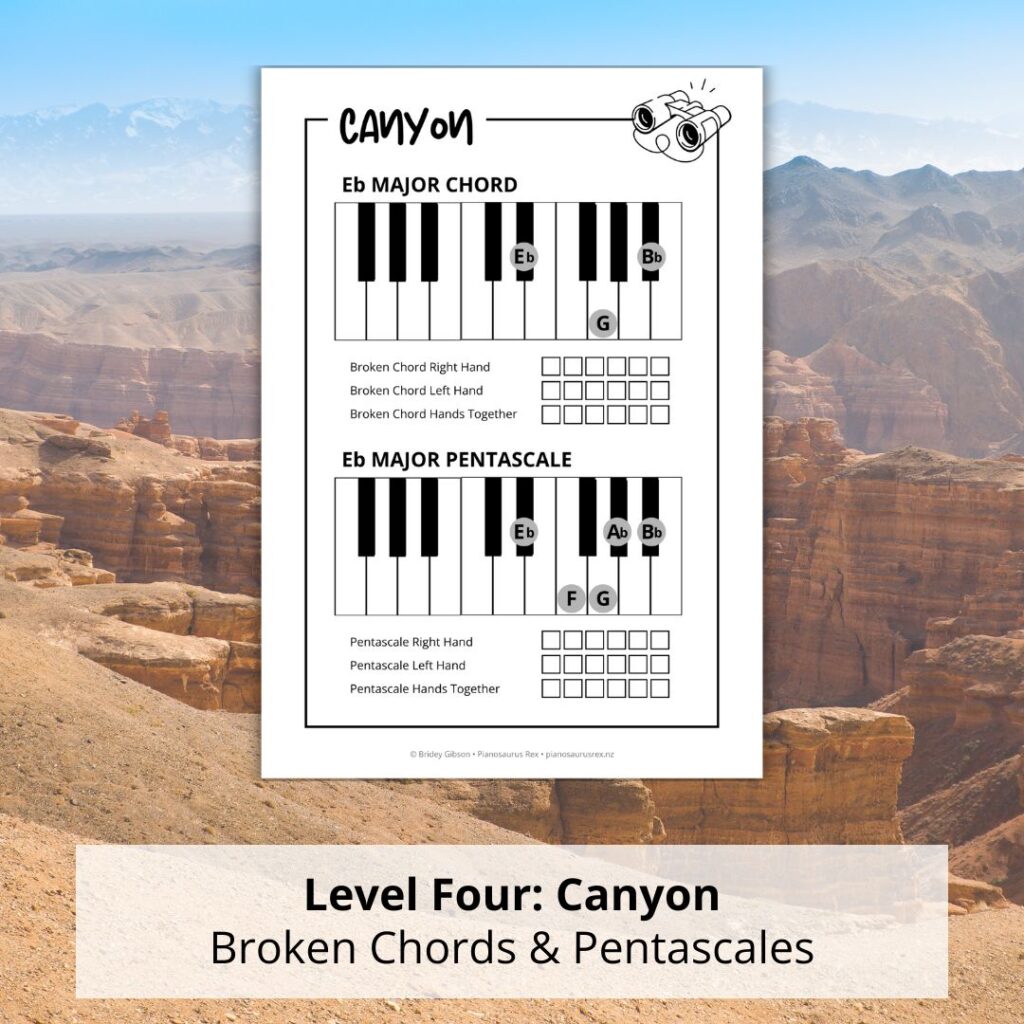
Technique
- Black with white key broken chords
- Black key pentascales
- Legato and staccato
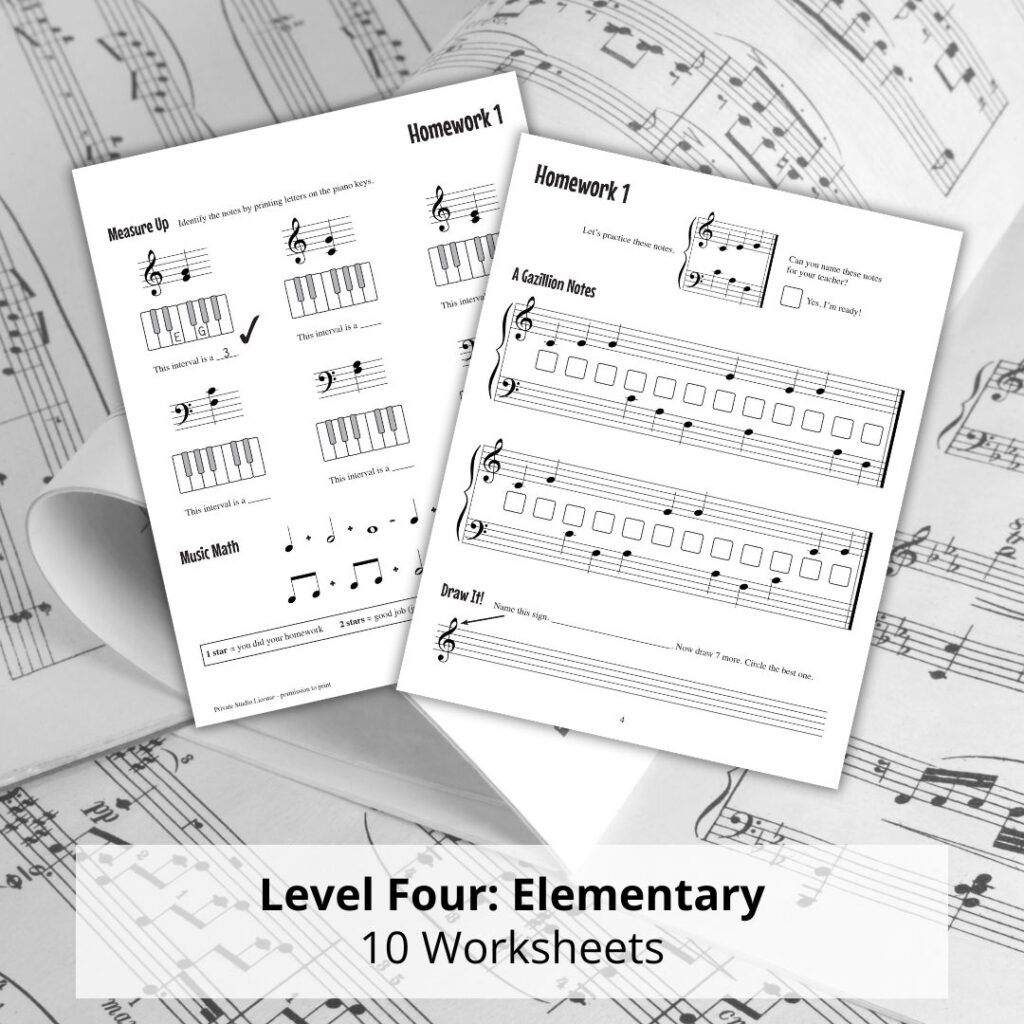
Theory
- Identify all notes on the grand staff
- Introduce ledger line notes
- Recognise intervals and triad chords
Acknowledging & Recording Progress
As students work through the material we keep track of their progress through checklists (my favourite!) which makes it easy to see at a glance what they’re working on. Once they complete each level students will have:
- Learned all pieces from the list in their method book (or a suitable alternative)
- Completed practice for all relevant broken chords and pentascales
- Finished ten theory worksheets
And then to show their knowledge there are three more requirements:
Digital Recording
Students choose a bonus piece (I give them some options from other method books and supplementary material) which they prepare to performance level. We then take a video to show their progress, which we can then share with parents and keep as a record to look back on as they grow and develop as musicians.
Technique Demonstration
To show that they’ve mastered the different broken chords and pentascales, I ask students to demonstrate a (mostly random) selection from their current level. This doesn’t prove too difficult, as they’ve already completed a lot of practice for the six different keys which have been covered.
Viva Voce
Finally, to test theory knowledge I ask a few questions about pieces they’ve been working on (like identifying notes, counting rhythm, naming note values, and explaining dynamics). I like to do this at a couple of points during each level: once near the middle to highlight if there’s any particular topics that need more attention; then again towards the end to make sure they can apply their theoretical knowledge to their pieces.
It’s nice to have a physical record of progress, so once students complete a level they receive a certificate plus a badge.
I make the badges at our local library, but if you’re based in the US then it’s possible to get custom badges from:
Dynamic Doodle Co
Very Piano
Covering Material During Lessons
With Rotating Lessons it’s easy to focus on different areas of the curriculum during the different activity stations:
One-On-One
During the individual part of the lesson we focus on repertoire: working on new or current pieces. There’s also an opportunity to introduce and review technique, plus the chance to cover other activities like ear training, improvising and sight reading.
Practice Lab
While students are working independently on the digital piano they split their time between repertoire and technique. This is really valuable practice time, especially when it follows on from the one-on-one lesson which helps to cement the concepts we’ve just covered.
Theory Lab
Having dedicated theory time during the lesson gives students the chance to complete worksheets independently, and once they’ve finished they can try to beat their high score in one of the music theory apps. This is also a good time to review concepts with videos and theory games.
Read More: The Essential Guide to Rotating Piano Lessons
Key Takeaways
A well-balanced curriculum for beginner piano sets students up for success with their musical education. Students develop the skills and knowledge they need for a solid foundation as they focus on core repertoire, technique, and music theory.
Organising material into different levels provides a good framework, and students are motivated as they make measurable progress.
For more engaging resources for beginner piano lessons, make sure you check out the Teacher Resource Library and access over 30 digital resources for free!



